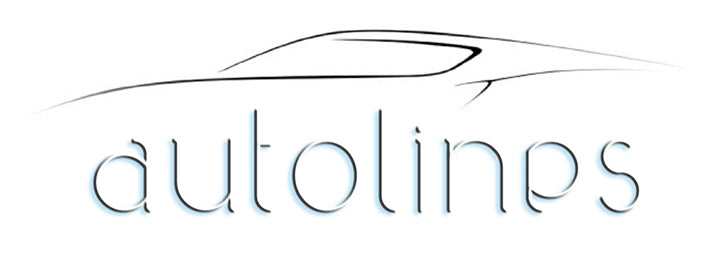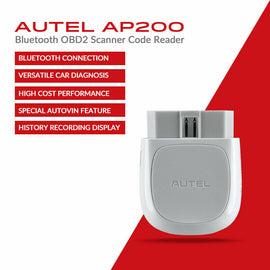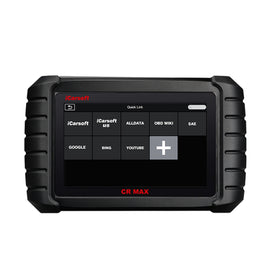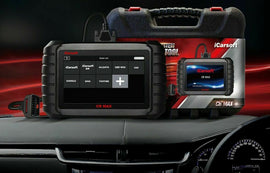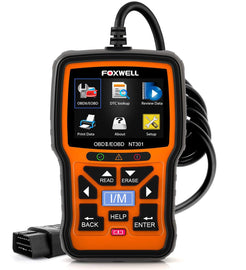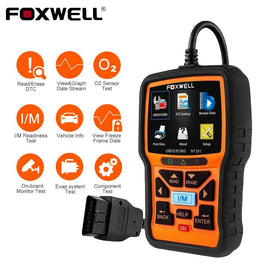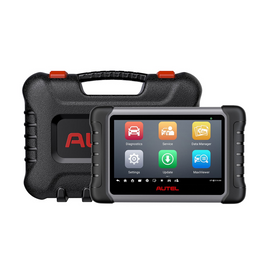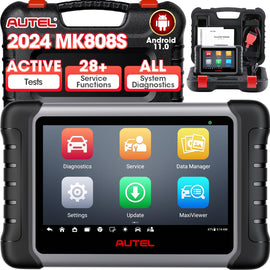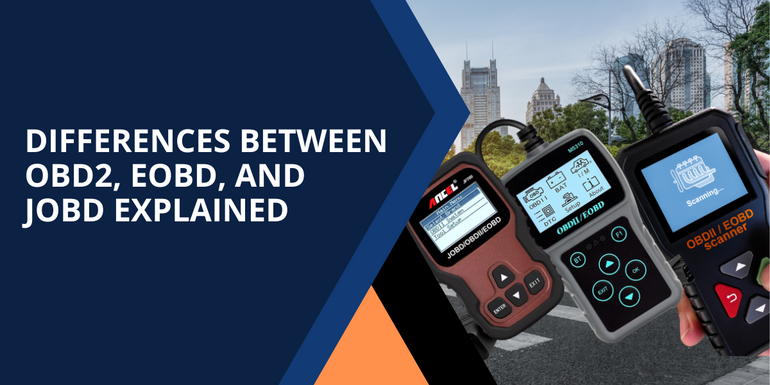The development of vehicle diagnostics has dramatically changed the way mechanics and car owners approach maintenance and troubleshooting. Systems such as OBD2, EOBD, and JOBD, which function as standardised communication protocols between a vehicle's engine control unit (ECU) and a diagnostic tool, are essential to this development.
Despite their similar functions, these systems differ in scope, regional standards, and compliance requirements. Technicians, car owners, and anybody else purchasing a vehicle diagnostic tool must comprehend these distinctions.
This article examines the differences between these three systems and the reasons they are significant in real-world automotive situations.
What is OBD2?
Your car's built-in self-diagnostic system is called OBD2. This standardised protocol enables the extraction of real-time data and diagnostic trouble codes (DTCs) using the OBD2 connector.
Most likely, you have already come across OBD2:
Have you ever seen the dashboard's malfunctioning indicator light?
Your car is trying to alert you to a problem. If you visit him, a mechanic will diagnose the problem with an OBD2 scanner.
He will do this by attaching the OBD2 reader to the 16-pin OBD2 connector, which is located near the steering wheel. The car responds to the tool's "OBD2 requests" with "OBD2 responses," which may include information about speed, fuel level, or Diagnostic Trouble Codes (DTCs). This allows for quicker troubleshooting.
What is EOBD
European On-Board Diagnostic, or EOBD, is the same as OBD2. All passenger cars in the M1 category that were manufactured after January 1, 2001, for gasoline engines, or after January 1, 2004, for diesel engines, are subject to EOBD.
Commercial vehicles must also adhere to the EOBD regulations. Commercial vehicles manufactured after January 1, 2007, are required to adhere to the EODB guidelines.
Each EOBD error code has five characters. The first four digits are followed by a letter, which mentions the system where the error codes are stored. If the code complies with the EOBD standard, the second character is a 0.
It can also store fault codes and "Freeze Frame" data* pertaining to an emissions-related incident. This enables one to trace the conditions that led to the error code's occurrence.
Remember that there is not much Difference between OBD2 and EOBD, the only difference is that EOBD was implemented later.
What Is JOBD?
Japan's version of the OBD system, known as JOBD (Japanese On-Board Diagnostics), was first implemented for cars made starting in 2002. It was created with some OBD2 protocol compatibility in order to comply with Japanese automotive regulations.
JOBD differs from its OBD2/EOBD counterparts in the following ways:
-
Protocol Adaptations: Some generic OBD2 tools are incompatible with JOBD because it frequently uses manufacturer-specific protocols that are not present in U.S. or EU models.
-
Emission Monitoring: Although it covers emissions control similarly, its diagnostic coverage and implementation may be somewhat limited compared to OBD2 and EOBD.
-
Vehicle Brands: Japanese domestic market (JDM) automobiles, such as Toyota, Nissan, Mazda, and Subaru, that are sold in Japan, are the main users of JOBD. These manufacturers' export models, however, might be compatible with EOBD or OBD2 standards.
OBD2 vs EOBD vs JOBD: A Comparative Table
Due to these variations, users should exercise caution when selecting a scan tool for JDM vehicles, particularly when importing from Japan into countries like Australia or the UK.
|
Feature |
OBD2 |
EOBD |
JOBD |
|
Region |
USA & North America |
Europe |
Japan |
|
Mandatory Since |
1996 (petrol) |
2001 (petrol), 2004 (diesel) |
2002 (domestic vehicles) |
|
Protocols Used |
SAE J1850, CAN, ISO 9141 |
ISO 9141, ISO 14230, CAN |
Manufacturer-specific + CAN |
|
Connector Type |
Standard 16-pin |
Standard 16-pin |
Standard 16-pin |
|
Emission Monitoring |
Yes |
Yes |
Yes |
|
Primary Vehicle Coverage |
American vehicles |
European vehicles |
Japanese domestic vehicles |
|
Diagnostic Compatibility |
High |
High |
Moderate to High (varies) |
Choosing the Right Automotive Diagnostic Tools
The origin of your car is a crucial factor to consider when choosing a diagnostic scan tool for Australian cars. OBD2, EOBD, and JOBD system compatibility is essential because many Australian cars are imported from the US, EU, or Japan.
All three standards are usually supported by the best car diagnostic scan tool, guaranteeing wide compatibility across various makes and models. Qualities to search for consist of:
-
Multi-protocol support (CAN, ISO, KWP2000, J1850)
-
Live data reading and graphing
-
DTC definition library
-
Updateable software and multilingual menus
For example, unless it also supports JOBD protocols, an OBD2 scanner for car owners may work perfectly on an American Ford Ranger but not be able to read codes from a JDM Toyota.
Why It Matters
Knowing these differences has a direct impact on your car's safety, repair effectiveness, diagnostic accuracy, and regulatory compliance. Using the incorrect scan tool for your car's onboard system can result in a misdiagnosis or an insufficient code retrieval.
Being knowledgeable about OBD2, EOBD, and JOBD guarantees that you can effectively handle a variety of vehicles, regardless of your level of experience as a professional technician or do-it-yourself enthusiast.
Conclusion
Understanding the differences between OBD2, EOBD, and JOBD helps ensure accurate diagnostics and smoother car maintenance.
Whether you're using car diagnostic tools for American, European, or Japanese vehicles, choosing the right protocol-supported device is crucial. At Auto Lines Australia, we offer a wide range of reliable diagnostic tools that support all three systems, making them perfect for both DIY users and professionals.
Our tools provide real-time data, clear DTC readings, and broad compatibility, helping you avoid misdiagnoses. With increasing imports and vehicle diversity in markets like Australia, having the right knowledge and equipment is no longer optional—it’s a necessity for modern car care.
FAQs
What is the main difference between OBD2 and EOBD?
OBD2 is the U.S. standard for vehicle diagnostics introduced in 1996, while EOBD is the European version introduced in 2001 for petrol cars. They share similar protocols but are region-specific.
Can one diagnostic tool support OBD2, EOBD, and JOBD?
Yes, many modern car diagnostic tools support all three protocols. Auto Lines offers multi-system tools compatible with American, European, and Japanese vehicles, ensuring broader coverage and easier maintenance.
